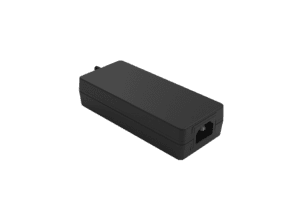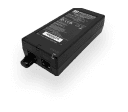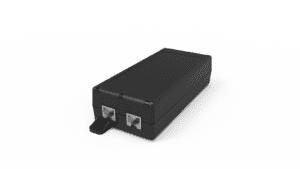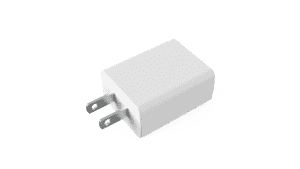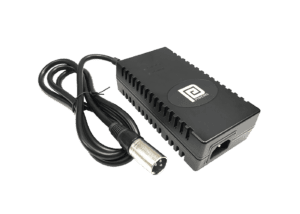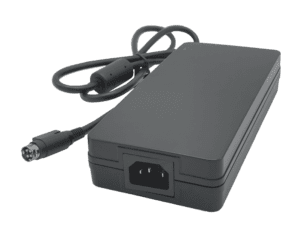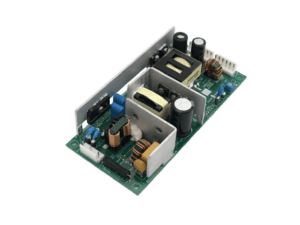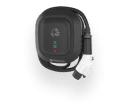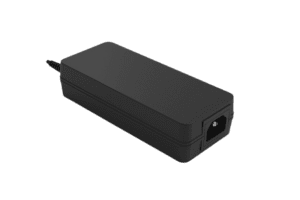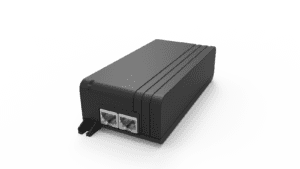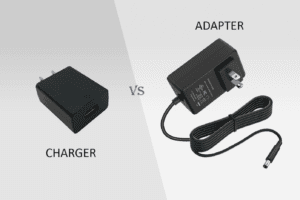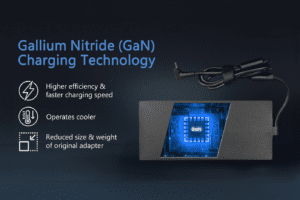BLOG
How the Rise of Autonomous Delivery Robots Is Driving Demand for IP67 Outdoor Charging Infrastructure in Urban Areas
Table of contents

The last-mile delivery revolution is in full swing, and it’s being powered—literally and figuratively—by fleets of autonomous delivery robots roaming sidewalks, campuses, and city streets. As urban logistics evolve, so too does the infrastructure required to support these fleets. The robots may grab headlines, but behind the scenes, a critical component is taking center stage: rugged, IP67-rated outdoor charging stations.
These charging docks are essential for keeping autonomous bots operational 24/7. They provide not only power but also safety, environmental protection, and operational intelligence. With robots facing unpredictable weather, debris, vandalism risks, and temperature swings, IP67-rated outdoor charging stations have become the backbone of scalable urban delivery networks.
In this article, we’ll explore how the surge in autonomous delivery is reshaping urban power infrastructure—and what OEMs, cities, and tech partners must consider when deploying reliable outdoor charging systems.
Why IP67 Charging Infrastructure Is Now Mission-Critical
Autonomous delivery robots operate in unpredictable urban environments. From heavy rain to dust storms and extreme heat, they need outdoor charging systems that protect against the elements and enable reliable recharging at any hour.
Top Features
- IP67-rated enclosures for water and dust resistance
- Wide-temperature components to operate from -20 °C to +50 °C
- Waterproof connectors and sealed cable entries
- Pressure-equalizing vents to prevent condensation inside the unit
Top Benefits
- Prevents system failure from moisture, dust, and extreme weather
- Enables 24/7 robot uptime with unattended recharging
- Reduces maintenance calls from weather-related dock issues
- Supports deployments in parks, curbsides, and open-air locations
Best Practices
- Design docks for ground-level water runoff or elevated mounts
- Use hydrophobic membranes or gaskets for passive waterproofing
- Include LED or app-based diagnostics for visual status checks
- Conduct environmental testing that mirrors your deployment region
IP67 infrastructure ensures that delivery doesn’t stop when the weather changes.
How Delivery Robots Are Changing Urban Power Infrastructure
The rapid growth of autonomous delivery is forcing cities and OEMs to rethink infrastructure. Robots are not like EVs—they need compact, decentralized, and tamper-resistant charging stations embedded within the urban landscape.
Top Features
- Compact footprints for installation on sidewalks, medians, or walls
- Integration with solar panels or city grids for power autonomy
- Tamper-resistant fasteners, covers, and keyless technician access
- Cloud-based monitoring dashboards for multi-location power management
Top Benefits
- Fits seamlessly into busy pedestrian areas
- Supports multiple robots in dense environments
- Minimizes need for power infrastructure rewiring
- Enables remote fault detection, usage analytics, and performance reporting
Best Practices
- Partner with municipalities early for permitting and public safety review
- Standardize dock designs across neighborhoods for scalability
- Include surge protection and backup battery modules
- Implement pedestrian-friendly design (e.g., low-profile, no tripping hazards)
Urban deployment isn’t just about protection—it’s about integration into public spaces.
Key Power and Charging Features for Delivery Robot Docks
Charging outdoor robots goes far beyond plugging in a wire. The charging station must recognize the robot, communicate with its BMS, and deliver safe, fast power under varied conditions
Top Features
- AC-DC or DC-DC converters with programmable output ranges (24–72V DC)
- BMS integration via CANBus or UART for intelligent charge management
- Overvoltage, thermal, and current limiting protections
- Remote shutdown and reboot capabilities for safety and maintenance
Top Benefits
- Avoids overcharging, battery swelling, or fire risks
- Supports fast charge cycles without battery degradation
- Enables predictive maintenance with data-logged charge cycles
- Increases fleet efficiency with real-time charge level feedback
Best Practices
- Use wide-temp, high-efficiency switching components (GaN or SiC)
- Include LED indicators or mobile alerts for charge status
- Log every charge event for fleet-wide diagnostics
- Ensure electrical isolation and safety for public-facing docks
Charging must be intelligent, secure, and safe—especially in dense public areas.
CLIENT'S QUOTE
"Phihong’s PoE solutions have made a huge difference for us! Our network runs more efficiently, and we’ve seen real cost savings. We couldn’t be happier!"
Materials and Mechanical Design for Outdoor Deployment
Charging stations deployed on streets and sidewalks must be rugged, vandal-resistant, and weatherproof. Material selection and enclosure design are just as important as electrical specs.
Top Features
- Powder-coated aluminum or stainless steel enclosures
- Polycarbonate shells with UV stabilization and anti-yellowing treatment
- IP-rated access hatches and gaskets
- Tamper-proof screws and RFID-enabled access for technicians
Top Benefits
- Withstands years of public exposure without degradation
- Prevents water ingress, vandalism, or mechanical failure
- Enables safe maintenance without disassembly
- Offers public-friendly appearance and durability
Best Practices
- Avoid plastics that warp under heat or crack under cold
- Anchor stations into concrete or paved surfaces
- Include integrated drain holes and cable routing guides
- Design to pass impact resistance tests (e.g., IK08+ rating)
The ideal charging station is strong enough for the street, smart enough for the cloud.
Scaling Urban Fleets with Smart Charging Infrastructure
As cities move from pilot programs to full autonomous delivery fleets, charging infrastructure must scale efficiently and intelligently.
Top Features
- Modular dock platforms that support different robot models
- Interoperable connector standards or magnetic charging contacts
- Multi-dock hubs that serve multiple bots per location
- Cloud dashboards for load balancing and scheduling
Top Benefits
- Simplifies rollout across multiple zones or neighborhoods
- Reduces electrical load spikes during peak charging times
- Enables universal support for mixed fleets (delivery, cleaning, security)
- Supports grant applications and city partnerships with documented efficiency
Best Practices
- Implement charge scheduling to avoid overlapping energy draw
- Use remote management to push firmware updates and perform diagnostics
- Standardize form factor across vendors to streamline maintenance
- Plan for seasonal weather (e.g., snow, heat, salt corrosion)
Smart cities need smart charging—designed not just to power, but to scale.
How Phihong USA Supports IP67 Charging for Delivery Robots
Phihong USA is a global leader in ruggedized power solutions, offering IP67-rated charging stations, wide-temperature AC-DC modules, and smart power systems purpose-built for autonomous robots.
We help OEMs, cities, and developers deploy urban-ready infrastructure with:
- Sealed, outdoor-rated robot charging docks
- Smart communication integration with BMS and fleet software
- Customizable enclosures for sidewalk, wall, or embedded installations
- Compliance-ready solutions for UL, CE, IP, and municipal safety standards
Whether you’re scaling a delivery bot fleet or launching a pilot project, Phihong delivers the power to go further, no matter the weather.

Contact Our Team Today!
Our dedicated sales team and international partners are prepared to support you with your latest projects and initiatives globally.
Explore More with Phihong USA
As we conclude our exploration of PoE technology, it’s evident how these innovations are streamlining power and data integration across various industries. Phihong USA stands at the forefront of this technological advancement, offering a diverse range of power solutions designed to meet the evolving needs of modern industries.
Phihong USA’s extensive product lineup includes:
- Power over Ethernet (PoE) Solutions: Delivering reliable power and data transmission over a single cable, ideal for simplifying network installations and reducing costs.
- AC/DC Adapters and Power Supplies: From compact adapters to industrial-grade power supplies, Phihong provides solutions that ensure efficiency and reliability in various applications.
- Battery Chargers: Customizable chargers for lithium-ion and lead-acid batteries, supporting a wide range of power requirements for mobility and industrial applications.
- Medical Power Supplies: Specialized power solutions designed to meet the stringent requirements of the healthcare industry, ensuring safety and reliability.
Phihong USA is committed to innovation and excellence, continually developing products that meet the highest standards of performance and reliability. Their global reach and dedication to customer support make them a trusted partner in powering the future.
Here are some useful links to explore Phihong USA’s offerings further and bring in new potential clients:
Visit Phihong USA to discover how their advanced power solutions can support your business needs. Whether you’re looking to upgrade your network, or find reliable power supplies, Phihong USA has you covered.
By choosing Phihong USA, you’re partnering with a leader in power technology, ensuring your operations run smoothly and efficiently with top-tier power solutions. Contact Us today!
FAQ
Why is IP67 important for outdoor delivery robot charging stations?
IP67 ensures complete dust protection and water resistance for temporary immersion (up to 1 meter for 30 minutes). For delivery robots operating on streets and sidewalks, this protection is vital. Rain, snow, splashes from cars, or accidental hose sprays can damage unsealed electronics. IP67 enclosures prevent shorts, corrosion, and mechanical failure, ensuring your robots stay operational regardless of the weather. It’s a baseline requirement for safe, reliable power in urban environments.
Can IP67 charging stations be installed on sidewalks and public spaces?
Yes—but they must be designed with pedestrian safety, permitting, and durability in mind. Charging stations should have compact, low-profile designs to prevent trip hazards, and use tamper-resistant materials to avoid vandalism. Enclosures must be IP67 or higher to withstand the environment, and power modules must meet UL safety standards. Public installation may require working with city officials to gain approval and ensure integration into local infrastructure.
How do delivery robot docks communicate with the robot?
Most modern docks use CANBus, UART, or wireless handshakes to communicate with the robot’s battery management system (BMS). This allows the dock to confirm battery status, manage charging speed, log performance data, and even shut down charging in case of a fault. Some systems also support over-the-air updates, diagnostics, and cloud-based management. This communication ensures safe, efficient, and coordinated fleet operations—especially as cities deploy hundreds or thousands of bots.
What challenges do urban deployments present for robot charging?
Urban environments are full of variables: foot traffic, weather, vandalism, uneven terrain, and noise. Charging stations must be rugged and tamper-proof, with reliable power delivery and self-diagnostics. Physical installation may be restricted by zoning, access to grid power, or space constraints. Engineers must account for UV exposure, rain, temperature swings, and mechanical damage. That’s why IP67 certification, thermal protection, and public-space compliance are essential for urban delivery infrastructure.
How does Phihong help developers deploy urban-ready robot charging infrastructure?
Phihong USA provides OEMs and city planners with IP67-certified charging systems, including sealed power modules, communication-ready docks, and wide-temp-rated components. We assist with everything from power design and integration to compliance documentation, field testing, and scaling support. Whether you need a custom sidewalk dock or a modular fleet-wide platform, Phihong brings decades of expertise in outdoor-rated power solutions built to last in real-world environments.

